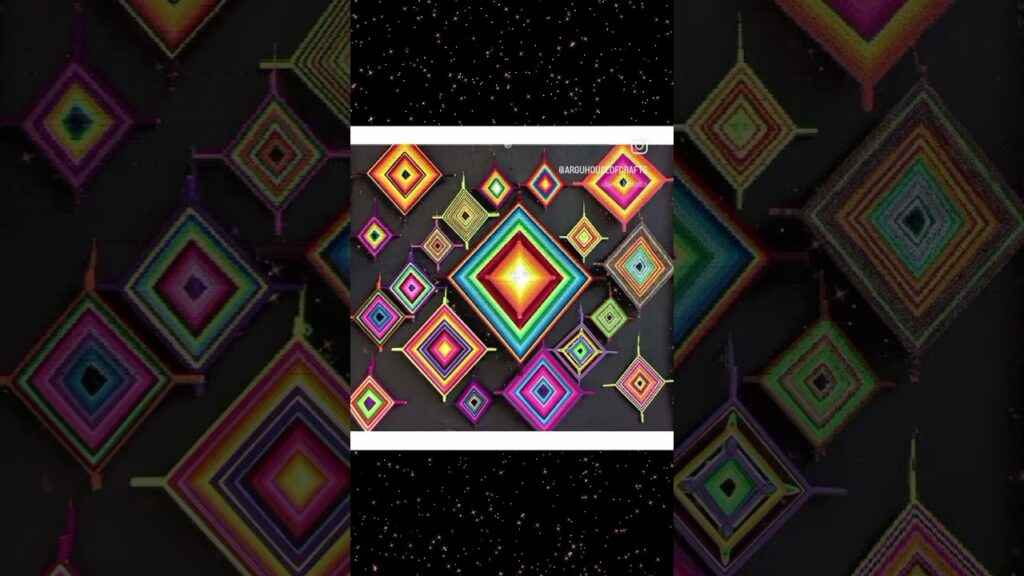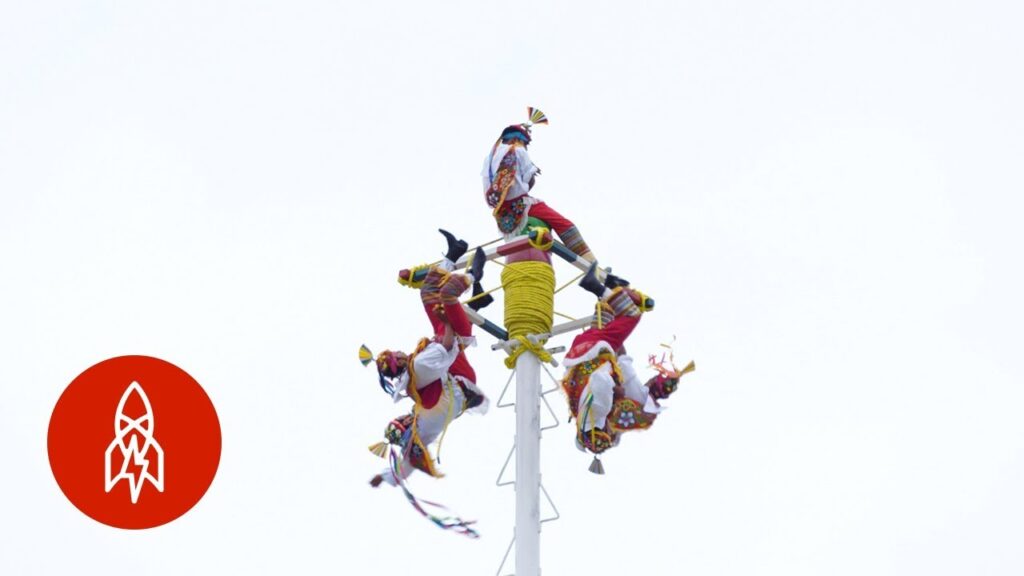The Spiritual Significance of the Eye of God or Tzicuri in Wixárika Culture
In the vibrant tapestry of Mexican cultural traditions, the Wixárika people, also known as the Huichol, hold a special place with their rich spiritual legacy. Central to their belief system is the ‘Eye of God’ or ‘Tzicuri,’ a symbol that captures the very essence of their connection to the divine and the universe. This sacred emblem, crafted with yarn and wood, serves as a conduit for the Wixárika to communicate with their deities and to seek protection for their community.
The ‘Tzicuri’ symbolizes the omnipresent gaze of the gods, watching over the Wixárika throughout their lifetime. From birth to death, each stage of life is marked by the creation of this symbol, with the belief that it shields the soul from malevolent forces. Moreover, the ‘Eye of God’ is said to possess the power to open channels of spiritual insight, allowing the Wixárika to experience visions during their sacred rituals and pilgrimages.
Crafted with care, each ‘Tzicuri’ embodies the intricate cosmology of the Wixárika people. The vibrant colors and patterns woven into the design represent elements of the natural world, such as water, air, earth, and fire, further emphasizing their deep respect for the environment. This reverence for nature is a cornerstone of the Wixárika culture, and the ‘Eye of God’ artfully expresses this balance and interconnectivity.
The process of creating a ‘Tzicuri’ is itself a meditative and spiritual act, where the weaver enters into a trance-like state to receive guidance from the ancestral spirits. It is not merely an artistic endeavor but a devotional practice, reflecting the Wixárika’s commitment to maintaining harmony between the spiritual and material worlds. The interplay of colors and the meticulous craftsmanship are believed to capture the weaver’s prayers and intentions, making each ‘Eye of God’ a unique bearer of personal and communal hopes.
As a vital part of Wixárika culture, the ‘Eye of God’ is also a gesture of goodwill and blessing. It is often presented as a gift to bless a home, protect the family, and to symbolize unity and the binding force of love. In this way, the ‘Tzicuri’ transcends its material form, becoming an embodiment of the spiritual and social values that sustain the Wixárika way of life.
The Artistic Process Behind Crafting an Eye of God
An eye of God, or «Ojo de Dios,» is a spiritual and votive object made by weaving a design out of yarn upon a wooden cross. Indigenous to the Huichol and Tepehuan people of western Mexico, the crafting of an Eye of God is a meditative practice that holds great cultural significance. The colors and patterns are more than mere decoration; they are a dialogue between the maker’s spiritual world and the tangible strands that compose these vibrant symbols.
Choosing the Materials
The journey of making an Eye of God begins with the selection of materials. Artisans traditionally use slender sticks of wood to form the cross, meticulously choosing pieces that are straight and strong. The yarn’s color is of utmost importance—as each hue represents a different aspect of life, such as blue for rain, yellow for the sun, red for life, and so on. The careful selection of shades that will harmonize in the final piece is not just an aesthetic choice, it’s part of the spiritual consideration that goes into every Eye of God.
Setting the Framework
Once the materials are ready, the artist starts by securing the wooden sticks in a cross formation, symbolizing the four directions of the universe. This is both a physical and spiritual foundation, and it must be prepared with respect and contemplation. The initial wrapping of the yarn is a foundational moment, setting the tension and pattern that will determine the strength and texture of the completed piece.
The Weaving Process
Weaving the yarn is done in silence or accompanied by prayer, allowing the weaver to infuse the Ojo de Dios with intentions and well-wishes. The weaving pattern is both methodical and intuitive, with some artisans favoring complex, multi-layered designs while others opt for simpler, more repetitive patterns. No matter the complexity, the act of weaving itself is a form of storytelling, with each layer representing growth, experiences, dreams, and prayers intertwined.
Finishing Touches
The finishing of the Eye of God is a moment of reverence. Care is taken to ensure that the end of the weaving is as neat and deliberate as the beginning. Some weavers choose to add embellishments, such as feathers or beads, to enhance the entirety of the piece. However, the true essense of an Eye of God is realized in the intention and spirit the weaver has breathed into it throughout the process — creating a sacred object that is said to have the power to see and understand things unknown to the physical eye.
Exploring the Symbolic Interpretations of the Eye of God
The Eye of God, or Ojo de Dios, is a spiritual and votive object deeply rooted in the indigenous cultures of Mexico, particularly among the Huichol or Wixáritari people. To the Huichol, this intricate craft is not merely a decorative item; it’s a sacred symbol that represents the ability to see and understand the unseen. The Eye of God is woven during rituals and holds the prayer that the person creating it might gain insight and protection from the divine.
Traditionally, the Eye of God is crafted by placing sticks in a cross-shape and weaving yarn around them in vibrant colors, with each hue bearing its own meaning. Blue symbolizes the ocean, red represents the earth, and white stands for air and space. The weaving process itself is meditative, and each layer signifies a different aspect of the human experience – from infancy to adulthood – marking the path of life with an all-seeing eye as guidance.
In exploring the depths of the Eye of God’s significance, it becomes apparent that this symbol transcends the visual aspect. It embodies a philosophical paradigm that interconnects the physical realm with the spiritual world. For wanderers and adventure-seekers traversing Mexico’s diverse landscapes, the understanding of such a traditional symbol offers a richer, more nuanced experience of the land’s cultural tapestry. Incorporating this mystic perspective not only embellishes one’s journey but also fosters a deeper connection with the country’s ancestral heritage.
The Cultural Importance of the Eye of God in Wixárika Communities
The Eye of God, or Ojo de Dios, is a spiritual and emblematic symbol deeply rooted in the Wixárika communities, often known as the Huichol peoples of Mexico. These intricately woven designs are not merely artistic expressions but serve as a profound cultural testament to the Wixárika people’s connection to the spiritual world. Moreover, the Eye of God represents the power of seeing and understanding the unseen, embodying the godly watchfulness over their lives.
Traditionally, the making of an Ojo de Dios is a ceremonial practice that starts at the birth of a child. Huichol fathers would craft these symbols, adding a new layer of yarn with each passing year of the child’s life up to the age of five. Each layer and color represent a stage in life and convey a specific prayer intended to guide the child’s spirit, thus making the Eye of God a marker of early childhood and a protective talisman.
Aside from its significance in childhood, the Eye of God also holds a place within broader ceremonial occasions. The Huichol community utilizes these sacred objects during rituals related to agriculture, rain, and peyote ceremonies. The weaving patterns and colors are symbolic, with each combination portraying a specific aspect of their deeply spiritual cosmology. For instance, shades of blue represent the Pacific Ocean, which is of immense spiritual significance to the Wixárika, symbolizing the ancestral realm and the essence of life.
In terms of its cultural importance, the Ojo de Dios is a symbol of the Wixárika’s resilience and enduring spirituality in the face of modern societal pressures. They have maintained their traditions despite ongoing economic and cultural challenges, and the continuance of creating these artifacts is a testament to their cultural pride. Today, the Eye of God has become an icon of the wider Mexican heritage, celebrated for its beauty and complexity, as well as its deep-rooted spiritual significance.
Moreover, as a cultural emblem, the Ojo de Dios has transcended its original sacred purposes and become a symbol of identity amongst the Wixárika. Each crafted Eye of God serves as a narrative of the Wixárika people’s history, beliefs, and prayers, thus preserving the intangible heritage of one of Mexico’s most prolific indigenous cultures. These sacred objects are now globally recognized, not only as works of art but as messengers of a rich, living culture that continues to thrive in Mexico’s sierra.



